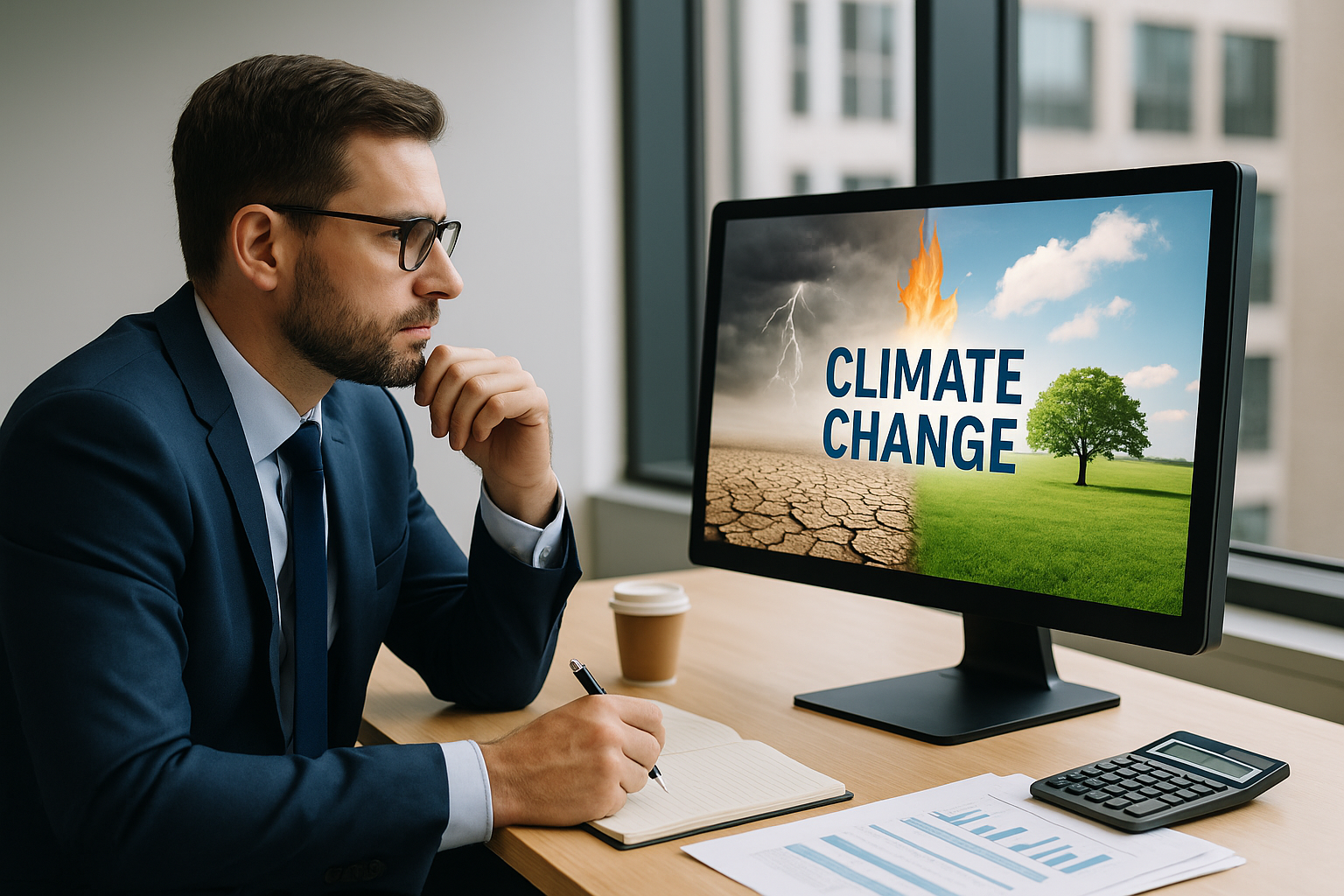Summary
Climate risk has moved from being a concern of scientists and regulators to a core business issue. Physical threats (storms, floods, heatwaves) and transition pressures (carbon regulation, clean tech demand) both pose financial, operational, reputational, and legal risks to companies. Organizations ignoring these risks do so at their peril. This article explains why climate risk is now a business risk, and offers practical guidance for companies to assess, mitigate, and adapt.
Climate risk and transition risk explained
Climate risk generally falls into two major categories:
- Physical risk: direct damage from extreme weather, changing precipitation, rising sea levels, and related hazards. These can disrupt operations, damage infrastructure, or degrade assets.
- Transition risk: risks arising from society’s response to climate change, including regulatory shifts, changing consumer preferences, technology shifts, and the rise of carbon pricing.
According to the US EPA, organisations face both kinds of risk: physical risk (damage, supply chain disruptions) and transition risk (market changes, policy/legal obligations). US EPA
How physical climate risks disrupt business operations
Extreme weather, floods, droughts, and heat waves are increasing in frequency and intensity. For companies with fixed infrastructure—factories, warehouses, supply chain nodes—these events can halt output, increase insurance costs, and require expensive repairs.
Recent research shows that high and low temperature extremes can significantly erode the asset values of enterprises, especially in heavy industries and manufacturing sectors. Cornell University
Regulatory pressure: climate governance and disclosure
Governments, investors, and regulators are increasingly enforcing climate risk governance and disclosure obligations. Frameworks like the Task Force on Climate-Related Financial Disclosures (TCFD) are becoming mandatory in many jurisdictions.
For example, financial regulators such as the Bank of England’s Prudential Regulation Authority have issued warnings to banks and insurers to close gaps in how they assess climate risk, including flood exposure, long-term physical risk, and transition exposure. Financial Times
Financial exposure: stranded assets & supply chain risk
Companies that own carbon-intensive assets (e.g. fossil fuel reserves, coal plants, outdated infrastructure) may find those becoming “stranded assets”—where regulation, technology or consumer sentiment make them unprofitable or obsolete.
Supply chains are also vulnerable: raw material scarcity, transport disruptions, and changing climate affect availability and cost. Businesses can see cost volatility, margin pressure, or outright loss of operations.
Recent analysis by Verisk Maplecroft warns that corporate exposure to climate risk is projected to triple by 2050, posing risk to trillions of dollars of market value. Axios
Business resilience: steps to manage climate risk
Here are practical strategies companies can adopt to make climate risk manageable and integrate it into business strategy:
- Conduct climate risk assessment & scenario planning
- Map out both physical and transition risks.
- Use different climate models (e.g. high warming vs moderate warming) to test business resilience over time.
- Tools and data sources exist (e.g. public climate data, hazard databases) that can help. ScienceDirect
- Improve data and disclosure practices
- Collect location data for assets to assess exposure.
- Measure greenhouse gas (GHG) emissions and track supply chain risk.
- Disclose climate-related risks transparently (financial filings, sustainability reports).
- Embed climate governance
- Assign senior leadership or board oversight for climate risk.
- Integrate climate risk into enterprise risk management, investment decision frameworks, and capital planning. Climate Risk Management, Office of the Superintendent of Financial Institutions, OSFI
- Establish risk appetite metrics related to climate.
- Adapt operations and supply chains
- Build redundancy (e.g. alternative supply routes) and flexibility.
- Invest in infrastructure resilient to climate hazards (e.g. flood defenses, cooling systems).
- Shift business models where needed (e.g. move toward low-carbon materials or renewable energy use).
- Engage stakeholders and align incentives
- Engage employees, investors, customers, regulators with clear communication about climate risk and action.
- Incentivize management and teams with performance metrics tied to climate risk mitigation.
- Monitor, review, and iterate
- Climate risk is dynamic—new regulations, changing climate realities, and technology shifts will keep evolving.
- Regular audits, scenario updates, adaptation of policies required to stay ahead.
Real world examples & data
- A recent report by Verisk Maplecroft projects corporate exposure to climate risk to triple by 2050, underlining how much risk will accumulate if not addressed now. Axios
- The US EPA framework categorizes risks and opportunities including reputational risk, legal/regulatory risks, technological risk, and market risks, showing that climate risk is multi-dimensional. US EPA
- Regulatory bodies like the Bank of England are already warning financial institutions that they have “gaps” in their climate risk management systems, particularly in scenario analysis and governance oversight. Financial Times
Conclusion
Climate risk has become business risk. Physical hazards and transition pressures pose real threats to assets, operations, reputation, and financial performance. Regulators, investors, customers expect companies to manage climate risk with seriousness, transparency, and strategic planning.
Companies that act now—by assessing risks rigorously, improving data and disclosure, embedding strong governance, adapting operations, and aligning incentives—can not only protect themselves but gain competitive advantage.
Build resilience with the right ESG leaders
Climate risk is a business risk — but with the right talent, it can become an opportunity for growth.
For those looking to build out leadership or technical teams to meet these challenges, at EnableGreen, we connect companies with senior executives and ESG specialists who can manage climate risk, strengthen governance, and drive long-term sustainability.
Contact us today to learn how our ESG recruitment services can support your strategy.


